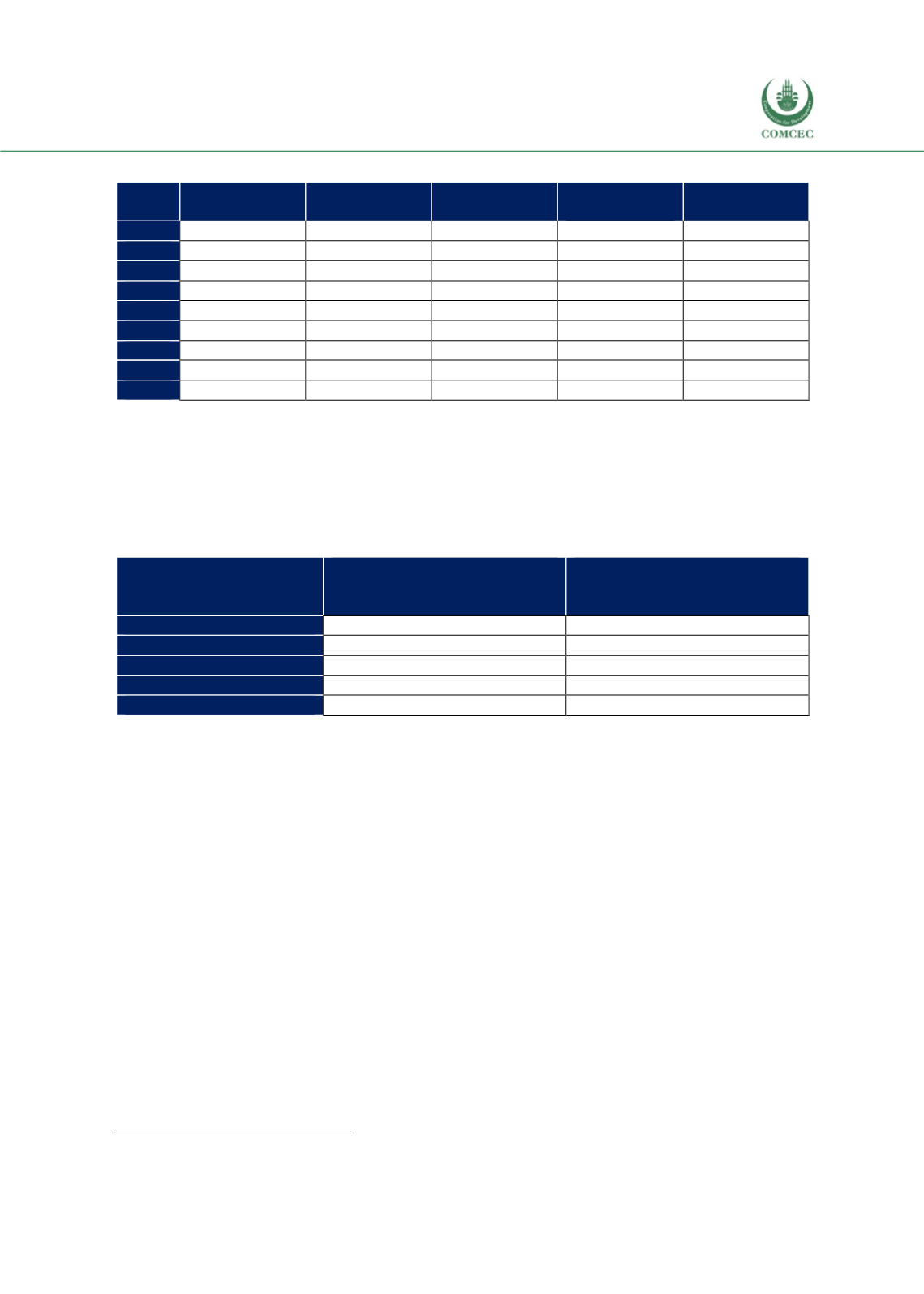

Reviewing Agricultural Trade Policies
To Promote Intra-OIC Agricultural Trade
145
Table 4. 49 Distribution of Thailand’s Top 5 Import Products, by Origin, %
African group
Asian group
Arab group
Non-OIC
Countries
Total
2008
0.7
11.8
0.6
87.0
100
2009
0.2
10.5
1.3
88.1
100
2010
0.2
9.0
0.9
89.9
100
2011
0.1
8.7
0.7
90.5
100
2012
0.3
8.5
0.5
90.7
100
2013
0.2
9.7
0.6
89.5
100
2014
0.2
9.8
0.6
89.4
100
2015
0.2
8.3
1.1
90.5
100
2016
1.4
8.3
0.7
89.6
100
Source: CEPII BACI, Eurostat RAMON, UN Comtrade, UN Trade Statistics, and authors’ calculations
Among the top 5 destination countries for Thailand’s top 5 agricultural export products, top two
are both OIC and ASEAN members, namely Malaysia and Indonesia with a total share of 42.1
percent (Table 4.50). It is followed by Benin, Nigeria and Saudi Arabia, with shares below 10
percent, showing that apart the first two countries mentioned, the export markets of Thailand
within the OIC are also diversified.
Table 4. 50 Top 5 OIC Destination Countries for Thailand’s Top 5 Export Products
Importer OIC country
Value of agricultural exports
to the country, million USD,
last 3-year average
% share in total agricultural
exports to the OIC countries,
last 3-year average
Malaysia
1,392.4
24.7
Indonesia
981.5
17.4
Benin
451.5
8.0
Nigeria
286.0
5.1
Saudi Arabia
226.7
4.0
Source: CEPII BACI, Eurostat RAMON, UN Comtrade, UN Trade Statistics, and authors’ calculations
The top two countries as origin of the Thailand agricultural imports are also the same with the
other three being totally different, namely Pakistan, Maldives, Niger (Table 4.51). The share of
the first two countries being 76.1 percent reflects a much higher concentration than the
agricultural exports of the country. However the total value of the top 5 import products is lower
than 1 billion USD, thus the concentration does not mean a concern for Thailand.
4.5.2. Agricultural Trade Policies in Thailand
Background
Thailand is a founding member of ASEAN, comprising 10 countries in the region.
14
Founded in
1967 as an association between Southeastern Asian Nations, ASEAN is currently one of the most
successful and large trading blocs in the world and it is moving ahead towards greater economic
integration, Thailand closely follows the trading bloc in signing the bilateral free trade
agreements (FTAs). Currently, Thailand is part of free trade agreements with 48 countries
worldwide, including 20 OIC member countries (Algeria, Bangladesh, Benin, Bolivia, Brunei
Darussalam, Cameroon, Egypt, Guinea, Guyana, Indonesia, Iran, Iraq, Libya, Malaysia, Morocco,
Mozambique, Nigeria, Sudan, and Tunisia) (WTO, RTA-IS).
14
Brunei Darussalam, Cambodia, Indonesia, Lao PDR, Malaysia, Myanmar, the Philippines, Singapore, Thailand, and Vietnam.
















